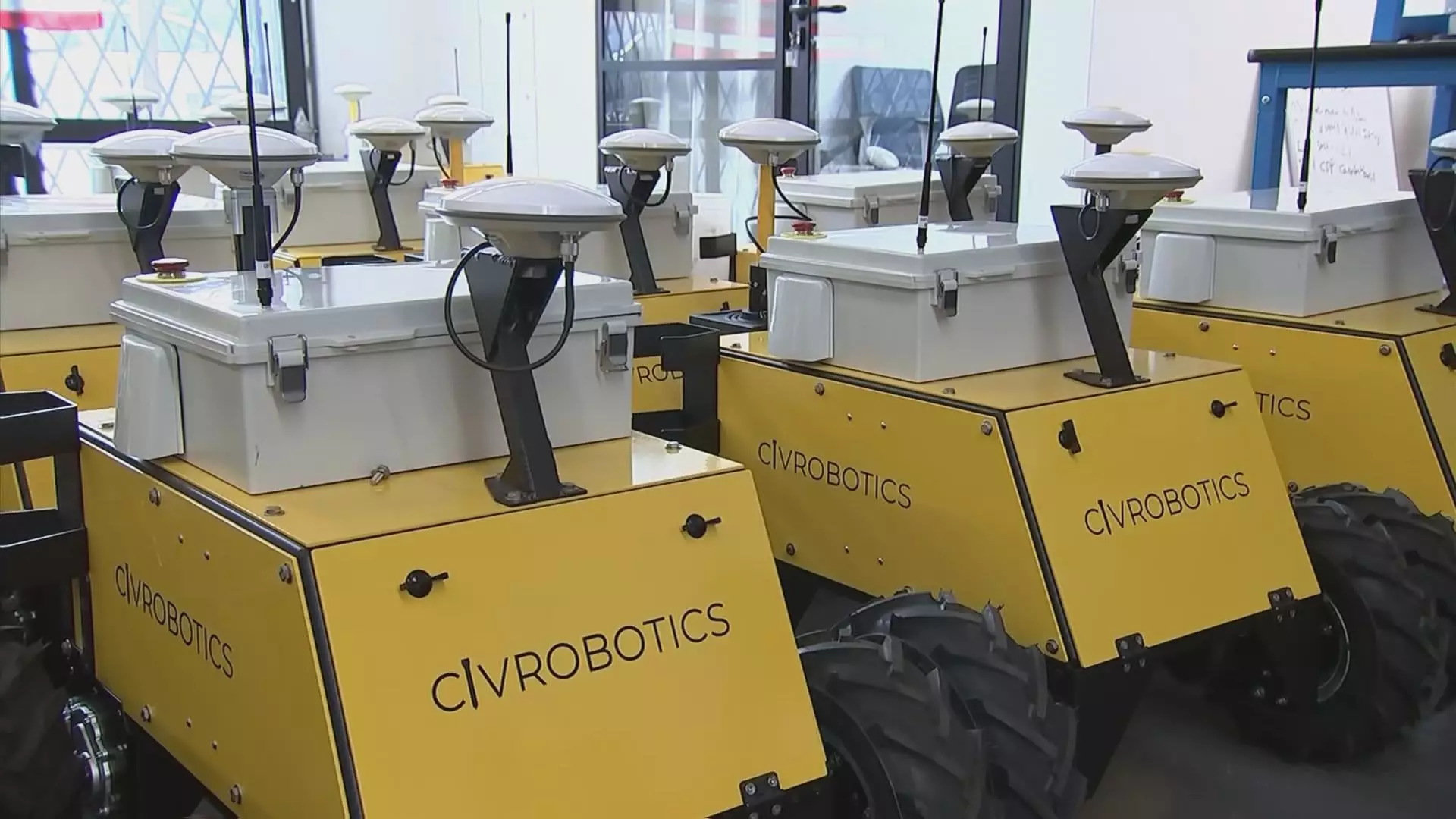In the vast landscape of renewable energy development, innovation is no longer just a complementary feature—it has become a necessity. While government policies and subsidies influence the pace of projects, the industry’s resilience hinges on technological advancements that streamline construction processes. Traditionally, erecting solar farms and renewable infrastructure involved labor-intensive tasks—meticulous surveying, precise layout marking, and extensive manual labor. These steps, while critical for success, are now being transformed by groundbreaking robotics capable of delivering faster, more accurate results with significantly fewer resources.
The advent of autonomous surveying robots signals a paradigm shift. CivDot, an advanced four-wheeled machine developed by Civ Robotics, exemplifies this transition. Capable of marking up to 3,000 layout points daily with a precision of less than 8 millimeters, CivDot is redefining efficiency. Its ability to traverse rugged terrains and operate under harsh weather conditions ensures that project timelines are not hampered by environmental challenges. This innovation demonstrates that the renewable energy sector is increasingly less dependent on traditional manual labor, reducing costs and mitigating human error.
Smart Technology Meets Sustainability: The Power of Geospatial Navigation
What sets CivDot apart from earlier surveying methods is its sophisticated integration of geospatial data and navigation technology. Using advanced GPS and sensor systems, the robot can pinpoint coordinates accurately even amidst uneven or obstructed outdoor surfaces. After an operator uploads the project data, the robot autonomously navigates the terrain, executing the layout with precision. This automation not only accelerates project timelines but also minimizes costly mistakes—an essential factor given the scale and complexity of renewable infrastructure projects.
The financial implications are substantial. Companies previously relied on teams of land surveyors equipped with handheld devices, often requiring multiple crews for large-scale sites. CivDot obviates this need, drastically reducing labor costs and increasing productivity. For instance, Bechtel, a global engineering giant, reports that its field engineers could mark around 350 points a day manually, whereas CivDot can achieve four times that in a single day. Such efficiency gains enable renewable projects to adhere to tight schedules, even in challenging environments like Texas muddy fields or Nevada desert terrains.
Transforming the Construction Workforce: Opportunities and Challenges
While the promise of robotics is compelling, it also raises questions about the future of employment in the sector. The use of CivDot and similar machines suggests a diminishing reliance on manual surveyors—highly skilled, well-paid professionals whose work can now be performed more rapidly and accurately by machines. This technological displacement calls for a broader industry dialogue: How can workers adapt to new roles? Will there be a shift toward operating, maintaining, and improving autonomous systems rather than manual surveying?
Furthermore, the deployment of these robots is not without logistical considerations. Battery life, terrain adaptability, and maintenance are practical factors that must be managed. For example, battery swaps become critical on long workdays, especially in remote locations. Ground clearance and tire durability are also vital, as robots venture into areas filled with natural obstacles, thick brush, or uneven ground. Such challenges necessitate ongoing innovation to enhance robot resilience and autonomy.
The Future of Robotic Innovation in Renewable Development
Investments in robotics for renewable energy construction are still in their nascent stages but hold immense transformative potential. Civ Robotics, backed by prominent venture capital firms and industry heavyweights like Alleycorp and Trimble Ventures, demonstrates the significant confidence in this direction. With over 100 CivDot robots already operational, and more in development, the technology is rapidly becoming an industry standard.
Crucially, the competitive landscape indicates a clear differentiation: while other robotics companies focus on highway or sports field markings, CivDot’s terrain-adaptive capabilities position it as a critical tool for large-scale renewable projects. This specialization offers a distinct advantage as solar farms expand into varied and often challenging environments. The integration of autonomous robotics within renewable infrastructure development is not merely a technological upgrade; it is a catalyst that propels the industry toward a faster, more resilient, and sustainable future.

